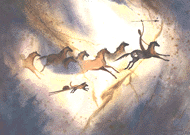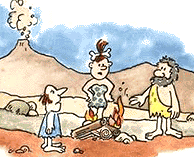TestPrepReview.com PROVIDES PRACTICE TEST FOR YOU!!!
 |
| Such a huge relief for this guy.. Who looks like he is just trying to get laid. |
ACCUPLACER
The ACCUPLACER test was developed by the College Board and is used to help determine course selection for students. The ACCUPLACER exam has three sections: Reading Comprehension, Sentence Skills, and Math. In some cases, an essay may be required.
ACCUPLACER Test Practice Questions /
ACCUPLACER Test Breakdown /
ACCUPLACER Test Study Guide /
ACCUPLACER Test Flashcards
ACT
The ACT test was developed by the American College Testing Program. The ACT exam has four sections: Reading, English, Mathematics and Science. A maximum score is a 36. The ACT test is used to screen college applicants.
ACT Test Practice Questions /
ACT Test Study Guide /
ACT Test Flashcards
GED
The GED stands for General Educational Development. The GED test measures Language Arts, Writing, Social Studies, Science, Reading, and Mathematics. The GED math test has two parts. Part one of the math exam does allow the use of a calculator and part two does not.
GED Test Practice Questions /
GED Test Study Guide /
GED Test Flashcards
GMAT
The Graduate Management Admission Test is known by the acronym GMAT. The GMAT test has three major sections: Analytical Writing Assessment, Quantitative Section, and Verbal Section. The GMAT is the most popular test used to screen applicants to an MBA program.
GMAT Test Practice Questions /
GMAT Test Study Guide /
GMAT Test Flashcards
GRE
The Graduate Record Examination (GRE) is used as a screening tool for graduate students. Each GRE Test Section has a possible score between 200 and 800. The GRE exam has 3 graded sections: Verbal Section: 30 questions in 30 minutes, Quantitative (Math) Section: 28 questions in 45 minutes, Analytical (Logic) Section: 35 questions in 60 minutes. The GRE test also requires that you take an additional test section that is not scored.
GRE Test Practice Questions /
GRE Test Study Guide /
GRE Test Flashcards
LSAT
The Law School Admission Test (LSAT) is administered by the Law School Admission Council, for students applying for entrance to law school. There are three different sections: Logical Reasoning, Reading Comprehension, and Analytical Reasoning.
LSAT Test Practice Questions /
LSAT Test Study Guide /
LSAT Test Flashcards
MAT
The Miller Analogy Test (MAT) is taken by candidates applying to graduate schools. The MAT test is a 60 minute timed test that contains 120 analogy questions, only 100 of which are actually scored. Analogy question topics cover the humanities, natural sciences, mathematics, and social sciences.
MAT Test Practice Questions /
MAT Test Study Guide /
MAT Test Flashcards
MCAT
The Medical College Admission Test (MCAT) is a program of the Association of American Medical Colleges and used by medical schools as part of their admission process.
MCAT Test Practice Questions /
MCAT Test Study Guide /
MCAT Test Flashcards
NCLEX
The National Council Licensure Examination (NCLEX) is used by the National Council of State Boards of Nursing (NCSBN) to measure the competencies of registered nurses and practical nurses.
NCLEX Test Practice Questions /
NCLEX Test Study Guide /
NCLEX Test Flashcards
PRAXIS
The Praxis exams are offered by ETS. The Praxis I exam covers Reading, Writing, and Mathematics, and is an initial teacher certification test. The Praxis II series of exams are used for teacher certification in specific subject areas.
Praxis Test Practice Questions /
Praxis I & II Test Study Guides /
Praxis I & II Test Flashcards
SAT
The SAT is administered by College Board, and is developed, published, and scored by the Educational Testing Service (ETS). The SAT Reasoning Test has three sections: Math, Critical Reading, and Writing. Scores on each section range from 200 to 800, with scores always being a multiple of 10. The SAT Essay is scored 1-6 with six being the best score.
SAT Test Practice Questions /
SAT Test Study Guide /
SAT Test Flashcards
TEAS®
The Test of Essential Academic Skills™ (TEAS®) is offered by Assessment Technologies Institute™ and is used as an admission tool for post-secondary education programs. There are four sections: Math, Reading, English, and Science. Practice Questions for the TEAS® Exam /
Study Guide for the TEAS® Exam /
Flashcards for the TEAS® Exam Getting Ready for Test Day
Preparing for a test isn't easy, and most test takers have some sort of test anxiety as they prepare. I know standardized tests have always given me a sense of dread, even when I'm adequately prepared and know I will do well on the test. Through high school, college, and then graduate school, the tests seemed to only get more complicated and more important. Preparing for the next difficult standardized test in my immediate future became a way of life for me.
Planning When to Study for your Test
As you prepare for your test, you want to make sure that you start soon enough. Knowing when to begin your preparation process is critical to having enough time to prepare, without feeling rushed. Adequate preparation time has become increasingly important as test takers lives are increasingly rushed and often feel as though they don't have enough time to prepare for their test.
The amount of time that is necessary to prepare depends on the individual, as well as the score the test taker hopes to achieve. If you are a quick learner, then you won't need to spend as much time preparing as someone that absorbs material and concepts at a lower rate. If you don't need a very high score in order to accomplish your goals, then you also won't need to spend much time preparing. However, if you need a high score, then it will require additional study time.
Test Preparation Resources
Study Guides and Test Prep
There are many resources that you can use as you begin the test preparation process. You will find much information about most tests completely free and online at official websites, containing test dates, the types of questions, how long the test will take, and most other questions concerning the details of the test. The internet also provides access to test study guides and free practice tests that will help you prepare as well.
Here, you'll find a lot of resources and information about the test preparation process. Hopefully you'll learn the right methods of preparing for the test in your future. Most of your initial studying can come from free online test prep resources.
OH AND the THINGS I NEED FOR BUSINESS TEST
Thinking about starting a business? You're not alone. Every year, thousands of Americans catch the entrepreneurial spirit, launching small businesses to sell their products or services. Some businesses thrive; many fail. The more you know about starting a business, the more power you have to form an organization that develops into a lasting source of income and satisfaction. For help with the beginning stages of operating a business, the following checklist is a great place to start.
Evaluate and Develop Your Business Idea
3. Write a business plan, including a profit/loss forecast and a cash flow analysis.
(See Nolo's Business Plan area.)Decide on a Legal Structure for Your Business
6. Identify the number of owners of your business.
7. Decide how much protection from personal liability you'll need, which depends on your business's risks.
8. Decide how you'd like the business to be taxed.
9. Consider whether your business would benefit from being able to sell stock.
10. Research the various types of ownership structures:
- Sole proprietorship
- Partnership
- LLC
- C Corporation
- S Corporation
11. Get more in-depth information from a self-help resource (see the
Nolo store) or a lawyer, if necessary, (see
Nolo's Lawyer Directory) before you settle on a structure.
Choose a Name for Your Business
12. Think of several business names that might suit your company and its products or services.
13. If you will do business online, check if your proposed business names are available as domain names.
14. Check with your county clerk's office to see whether your proposed names are on the list of fictitious or assumed business names in your county.
15. For corporations and LLCs: check the availability of your proposed names with the Secretary of State or other corporate filing office.
16. Do a federal or state trademark search of the proposed names still on your list. If a proposed name is being used as a trademark, eliminate it if your use of the name would confuse customers or if the name is already famous.
17. Choose between the proposed names that are still on your list.
Register Your Business Name
18. Register your business name with your county clerk as a fictitious or assumed business name, if necessary.
(See Nolo's article Registering Your Business Name.)19. Register your business name as a federal or state trademark if you'll do business regionally or nationally and will use your business name to identify a product or service.
20. Register your business name as a domain name if you'll use the name as a Web address too.
Prepare Organizational Paperwork
21. Partnership:
22. LLC:
23. C Corporations:
24. S Corporations:
Google happens to rank for the keyword TEST. as number 3..
The ultimate TEST:
You sir, must look at the following pictures,
AND NOT FAP.
...
I REPEAT!!!
NO FAP.
Ultimate test of your man hood.
To prove how ALPHA YOU ARE..
I know what you are thinking.

But you have to over come your weakness Daniel son.
you must FOCUS..
And now its over..
PEACE.




 THROUGH the centuries there has been such an intimate connection of fire with the cultural growth of humanity that whatever relates to the antiquity of fire is important in tracing- the history of early progress.' And because all inventions make use of what has gone before, the steps, which lead up to the making of the first stoves, are necessary in writing of their history.
THROUGH the centuries there has been such an intimate connection of fire with the cultural growth of humanity that whatever relates to the antiquity of fire is important in tracing- the history of early progress.' And because all inventions make use of what has gone before, the steps, which lead up to the making of the first stoves, are necessary in writing of their history.  Fires -needed watching, not only to keep them from going out, but from spreading, or theft, so a fire-keeper was delegated to the work, thus starting a social organization.
Fires -needed watching, not only to keep them from going out, but from spreading, or theft, so a fire-keeper was delegated to the work, thus starting a social organization. 
























